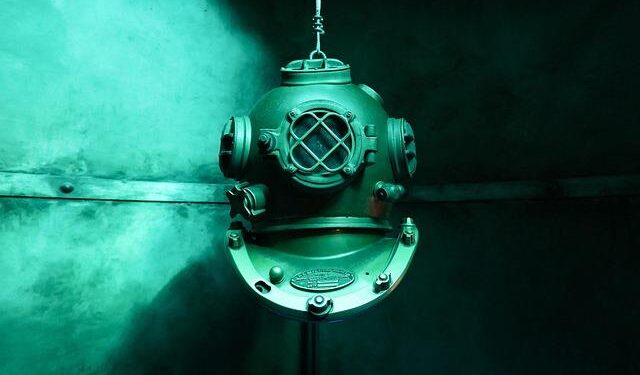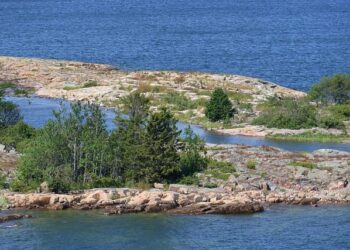In an era marked by increasing geopolitical tensions and evolving cyber threats, the safety of critical underwater infrastructure has emerged as a paramount concern for nations worldwide. Recognizing the strategic importance of subsea cables, pipelines, and related installations, the Nordic countries have taken decisive steps to bolster their collaborative efforts. Strengthened cooperation on the safety of critical underwater infrastructure under the Nordic Co-operation framework signals a new chapter in regional security, aimed at safeguarding vital communication networks and energy supplies that underpin the digital economy and national security. This article explores how Denmark, Finland, Iceland, Norway, and Sweden are joining forces to enhance surveillance, share intelligence, and develop joint response strategies to protect their submerged lifelines against an array of emerging threats.
Enhancing Security Protocols for Underwater Infrastructure Across Nordic Nations
The Nordic countries are intensifying their efforts to safeguard vital underwater infrastructure, recognizing its significance in maintaining regional security and economic stability. Collaborative initiatives now focus on implementing cutting-edge surveillance technologies and synchronized emergency response protocols. This coordinated approach not only enhances threat detection but also ensures rapid action in case of potential sabotage or environmental hazards. Key elements include:
- Real-time data sharing between national security agencies
- Joint underwater drone patrols and inspections
- Standardized cybersecurity measures for subsea communication networks
- Comprehensive risk assessments updated annually
| Country | Primary Infrastructure Focus | New Security Measures |
|---|---|---|
| Norway | Subsea oil pipelines | Advanced sonar monitoring |
| Sweden | Underwater data cables | Encrypted signal transmission |
| Denmark | Wind farm cabling | Integrated drone patrols |
| Finland | Marine research stations | Enhanced physical barriers |
Officials emphasize that bolstered cooperation extends beyond technology to include shared training exercises and unified legal frameworks to prosecute underwater infrastructure offenses. By aligning protocols and resources, Nordic nations are setting a precedent for regional maritime security, ensuring these critical assets remain resilient against evolving threats and climate-related challenges.
Leveraging Advanced Technologies to Monitor and Protect Subsea Assets
In an era where underwater infrastructure forms the backbone of critical energy and communication systems, the Nordic countries are harnessing cutting-edge technologies to ensure their resilience and security. By deploying real-time sensor networks, remotely operated vehicles (ROVs), and autonomous underwater drones, experts can now monitor the integrity of pipelines, cables, and platforms with unprecedented precision. These innovations not only enable early detection of structural anomalies and environmental hazards but also facilitate rapid response to potential threats, minimizing downtime and environmental impact.
Collaboration between Nordic nations has expedited the development of an integrated platform combining AI-driven data analytics and cross-border information sharing. This approach enhances threat assessment and decision-making capabilities by leveraging diverse data inputs. The table below highlights some key technological tools currently employed across Nordic subsea monitoring initiatives:
| Technology | Main Application | Benefit |
|---|---|---|
| Autonomous Underwater Vehicles (AUVs) | Dynamic inspections and mapping | Extended coverage and reduced human risk |
| SOSUS Acoustic Sensors | Structure health monitoring | Real-time anomaly detection |
| Machine Learning Algorithms | Predictive maintenance | Proactive issue mitigation |
- Cross-national data collaboration for comprehensive threat visibility
- Integrated emergency response protocols supported by tech alerts
- Environmentally sensitive monitoring to safeguard marine ecosystems
Policy Recommendations for Unified Nordic Response and Risk Management Strategies
To bolster the resilience of critical underwater infrastructure across the Nordic region, joint policies must emphasize harmonized risk assessment frameworks that enable rapid threat detection and coordinated response. Central to this approach is the establishment of a shared intelligence platform, allowing for real-time data exchange on cybersecurity threats, physical sabotage attempts, and environmental hazards affecting subsea cables and pipelines. Enhanced legal alignment on jurisdiction and liability will further facilitate swift intervention and cross-border operational support, ensuring seamless protection of vital communication and energy arteries.
- Integrated surveillance systems with unified alert protocols
- Joint emergency drills simulating both cyber and physical attacks
- Standardized training programs for first responders and technical teams
- Shared funding mechanisms to support infrastructure upgrades and risk mitigation
Moreover, embedding resilience into underwater infrastructure calls for comprehensive cross-sector collaboration that includes governmental agencies, private operators, and research institutions. Cross-border frameworks should prioritize investment in innovative technologies like autonomous inspection drones and AI-driven anomaly detection, which enhance situational awareness without compromising operational security. The following table outlines key pillars for a unified Nordic risk management strategy:
| Pillar | Focus Area | Expected Outcome |
|---|---|---|
| Collaboration | Cross-border task forces | Faster coordinated responses |
| Technology | ||
| Technology | AI-driven anomaly detection & autonomous inspection drones | Enhanced situational awareness and early threat identification |
| Legal Alignment | Unified jurisdiction and liability frameworks | Streamlined cross-border interventions and operational support |
| Funding | Shared financial mechanisms for infrastructure resilience | Sustained investment in upgrades and risk mitigation measures |
















